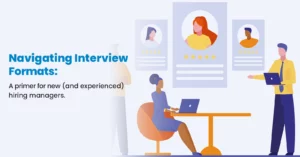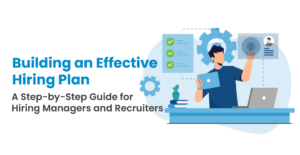Today’s talent has higher expectations of the organizations they work for, especially in terms of working environment and company culture. As monetary compensation increases have spread across the market, however, cultural factors, such as collaborative work environments, meaningful work and flexibility have begun to show increased influence on talents’ decisions to accept an assignment – or to end one early.
These expectations begin with the recruiting process. Candidates with a negative interview experience or an extended wait between an interview and a follow-up will turn their attention elsewhere. Nearly 60% of candidates in the current labor market say they expect to hear back from organizations regarding a decision or next steps within 48 hours of their interviews.
The top 5 factors fueling talent flight
Workplace culture is gaining ground on compensation as a job-acceptance influencer, but it has surpassed pay as a factor in talent turnover. Procom’s Voice of Talent survey found that the top 5 triggers for talent flight are:
- Toxic or disrespectful work environment
- Bad management
- Change in work models after starting (i.e., hybrid, remote, or in-person)
- Role misrepresented during interviews
- Fewer hours or less work than promised
Nearly two-thirds of survey respondents said they would consider quitting a job or ending a contract-based assignment early due to a negative work environment. Fewer than half said a new employment opportunity with significantly greater pay would spur them to leave a position and organization with which they were otherwise happy.
Highlighting positive culture and other talent appeals
When developing employee value propositions, job descriptions, and job postings, adhere to the lyrics of the classic Johnny Mercer song and “accentuate the positive.”
In addition to clearly and accurately representing a given role’s duties and expectations, emphasize what distinguishes the position and your organization. Let job candidates know if you offer a supportive work environment in which team members are encouraged to provide their input.
-
- Call attention to scheduling flexibility or remote work. Spotlight your commitment to cutting-edge technology and opportunities for professional development, such as ongoing training or upskilling.
-
- Communicate your commitment to diversity, equity and inclusion efforts. Demonstrate the progress your organization has made via its DEI initiatives.
-
- Underscore the value individual roles provide to the organization, its clients, the community, or the world at large. Highlight organizational values related to community involvement or charitable giving.
Many organizations that offer competitive wages and rewarding cultures lose out on elite talent because they don’t effectively illustrate the compelling reasons talent should join them. On the flip side, organizations that are unable to draw or retain talent despite high compensation may need to re-examine their culture and prioritize the overall talent experience.
A weak workplace culture doesn’t occur overnight, and building a positive culture won’t happen in a day, either. But organizations that are dedicated and are intentional about maintaining a positive, engaging culture will win today’s top job seekers over those that remain hung up on pay as the guiding light for talent.
The Voice of Talent Report: State of the Workforce
In October of 2022, Procom surveyed 1, 740+ contingent and permanent workers across the United States and Canada to uncover what’s most important to them amidst heightened expectations, competition and uncertainty.
We have distilled the data into actionable insights you can leverage to strengthen your position as an employer of choice and access the skills you need. You can get your copy below:




